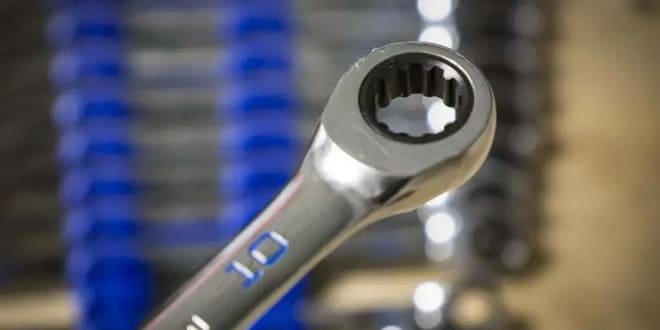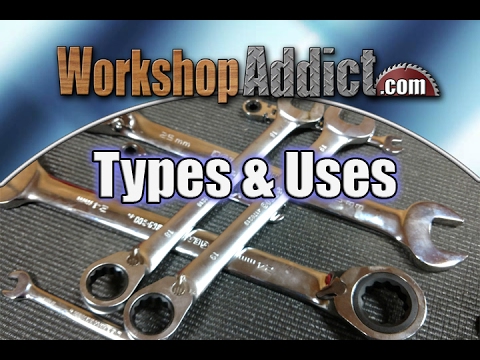
Are you worried about how does a ratchet wrench works? Then you are in the right place. A ratchet wrench is a tool for tightening or fastening nuts and bolts. Every device user needs to understand how it works and how to choose the right tool.
If you know how to operate the ratchet wrench and select the right size according to the nut head’s size, you understand how helpful the tool is.
A ratchet wrench saves the user’s time because you do not have to remove the wrench from the fastener to move in the opposite direction. Additionally, the tool is unique and easy to work within tight places with little space.
The Working Mechanism of a Ratchet Wrench
Using a ratchet wrench is simple. Notably, when using a ratchet wrench, you should find the right size for the nut.
Nuts have a standard unit of measurement, and there is always a perfect size of a ratchet for the nuts. Perfectly place the ratchet and ensure it fits well down to the bolt. If you do not do so, the head strips off the bolt.
A ratchet wrench uses a reversible ratcheting mechanism. Accordingly, it will allow the user to rotate the tool back and forth to make a turn instead of repositioning a wrench first.
The user saves time since they do not have to remove and reset the wrench, making it possible to work even in tight corners.
The direction of turning depends on whether you are tightening or loosening the nut. Turn the bolt right if you want to tighten it, and leave it to loosen the nut.
If you turn the ratchet wrench in the other direction, it allows repositioning. After repositioning, you only need to turn the ratchet wrench again while still on the bolt or nut.
The tool has an inbuilt switch that allows the user to apply action either left or right according to the user’s need. Therefore, you may use the ratchet wrench either to tighten or loosen the nut.
Uses of a Ratchet Wrench
Tightening loose bolts and nuts
Tightening loose nuts and bolts is hard manually and needs a tightening device. Therefore, a ratchet wrench serves the purpose best because it helps the user firmly tighten nuts without using a lot of effort.
Loose nuts may cause the malfunction of a machine. For example, weak nuts on a mounted device may result in accidents and significant losses.
Tightening or loosening fasteners in tight spaces
A ratchet wrench does not need the user to remove the wrench from the fastener head. Therefore, using the tool even in tight places is easy because it does not require a lot of space. Swinging back and forth conveniently is possible until the nut is tight or comes off.
Mounting objects on walls
You need nuts and bolts to mount objects like meter boxes and kitchen exhaust fans on concrete walls. To establish a tight connection, a ratchet wrench is the best tool to use. Tight nuts help prevent accidents and loss that may result from breakage.
Performing demolition works
Demolishing involves loosening nuts to get rid of a tight connection. Unmounting an object from a wall requires a ratchet wrench to be easy and fast. The tool makes it easier to unmount so that the correction of default is easy and fast.
Benefits Of A Ratchet Wrench
Available in varying sizes

Ratchet wrenches are available in different socket sizes. Therefore, it works perfectly with varying sizes of fasteners.
Additionally, the ratchet wrench has both metric and standard sizes available. It is consequently versatile because it applies to various sizes of nuts.
Ratchet wrenches have up to more than one hundred and twenty tooth sets available. Additionally, the tool has varying prices, giving the user a chance to select the best type that fits their budget.
It is fast
The ratchet wrench enables the user to swing in one direction and get back in the opposite direction without removing the fastener’s wrench.
Therefore, accomplishing the task is fast and easy, thus saving time. Additionally, some ratchet wrenches do not need a full swing, and a mere twist tightens or loosens the nut.
A firm and textured grip
A ratchet wrench has a firm grip on the handle, giving you a greater sense of control. Therefore, there is a low risk of breakage because your hand does not slip on the handle when you swing it.
It has a flexible head.
The flexible head makes customizing the ratchet wrench easy. You may approach the tightener from any angle. Additionally, replacing parts is simple in case any damages take place. You may change the head size and socket according to the circumstance.
Applicable in tight spots
With a ratchet wrench, you can avoid frequent flipping and turning. In the ratcheting action, the tool does not come off the nut until you accomplish the task. Therefore, a ratchet tool is the best for working in tight corners with little space.
Final Thought
A ratchet wrench makes work easier by tightening nuts and bolts to establish a permanent and robust connection. With a ratchet wrench, you can handle screws and nuts of different sizes because they come in various sizes.
Additionally, working in tight places is possible with the tool because you do not need to remove the wrench from the fastener every time.
Moreover, the ratchet wrench does not require a lot of working space to tighten or loosen nuts.
Additionally, the ratchet wrench saves your time because moving in two different directions is possible without taking the ratchet wrench away from the nut head.
- Read more: 10 Best Socket Organizers (Review)
